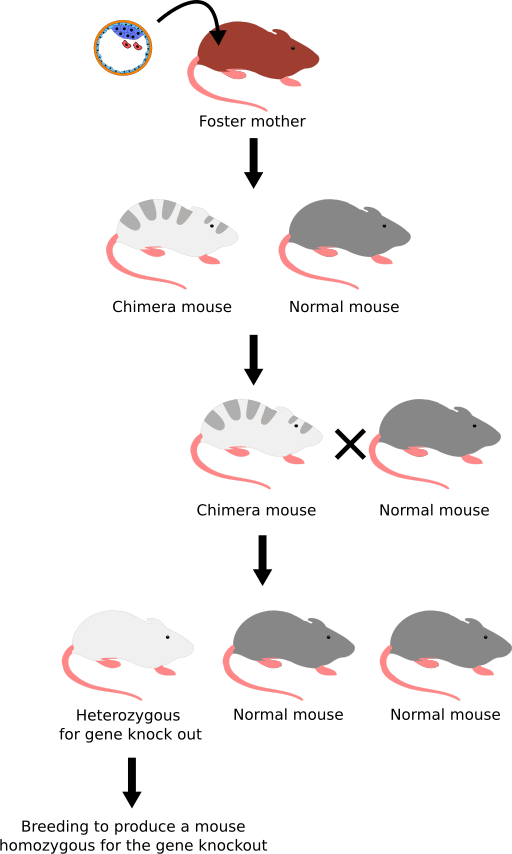In the laboratory, model organisms are modified in order to understand the basic mechanisms of genes. The transformation of recombinant DNA into bacteria is an example of a genetic modification. Other model organisms, like mice, are used to study genes. Through recombinant DNA scientists can selectively ablate a gene, or create a knock-out (KO).


Scientists can also overexpress or heterologously express foreign genes in what are termed transgenic organisms. As the name sounds, transgene refers to a gene from one place brought across into another.

With the advent of agribusiness, agriculture has become a profit driven venture independent of food production. In this case, high production is paramount. Whereas traditional agriculture and artificial selection was slow and methodical, genetic modification in the context of agribusiness is instantaneous through genetic engineering. The objective of genetic engineering is to transfer the DNA encoding a useful or favorable gene from an organism that carries that gene to one that does not. Simply inserting DNA into an organism does not result in expression. An appropriate promoter for the transgenic organism must be upstream of the gene of interest in order to drive transcription. In mammals, a strong promoter that will result in expression in every cell is the CMV promoter that is derived from cytomegalovirus. Likewise in plants, a strong promoter that works in every cell is derived from viral promoters like the CaMV promoter from cauliflower mosaic virus.
Examples of useful traits include:
- degrade herbicides
- kill agricultural pests
- synthesize critical nutrients
- to improve color and taste
- resist damage during transit or prolonged storage.
- Increase size
- reduce time to market (more rapid growth or maturation)

